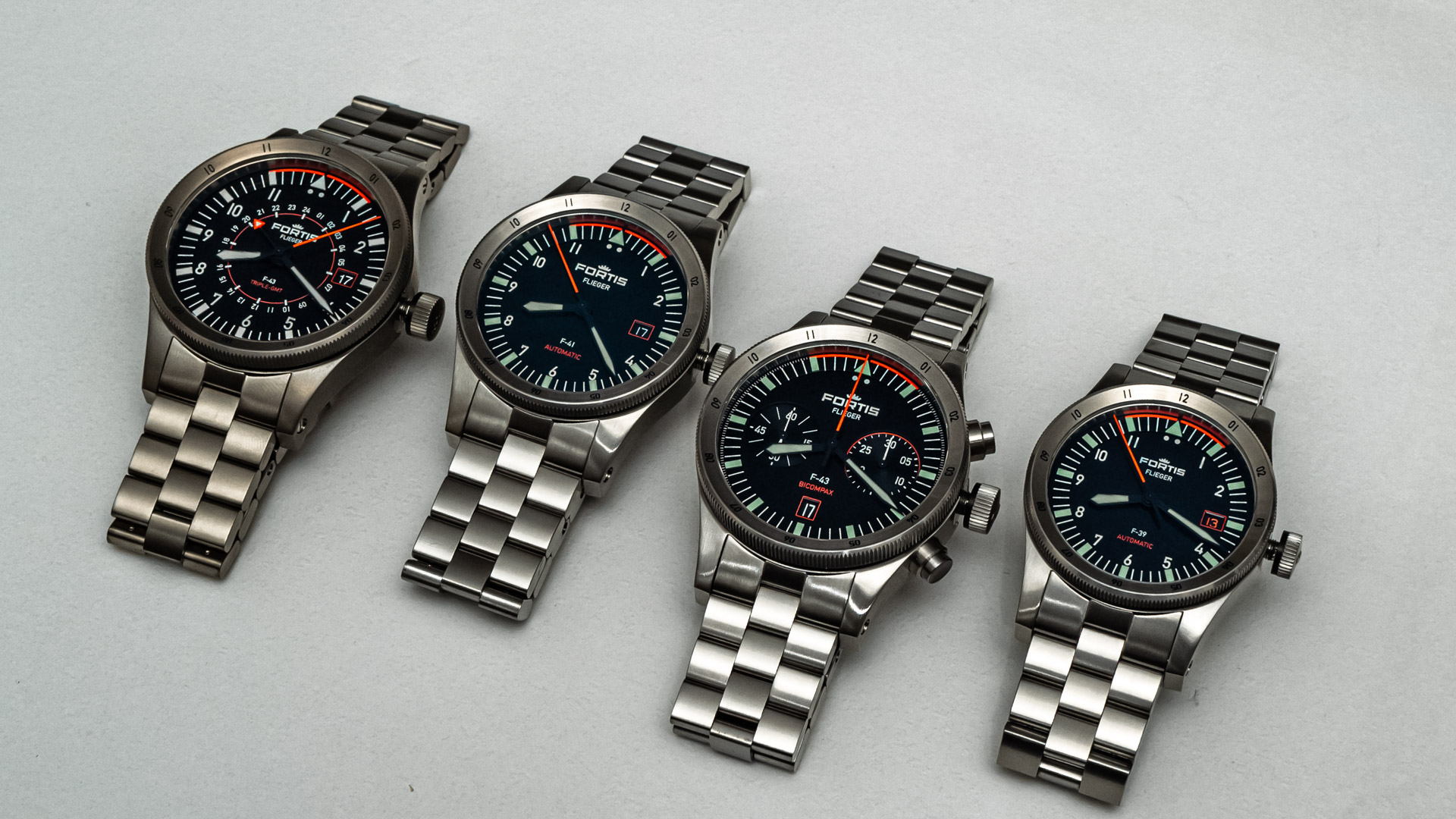 Fortis watches have a history in watchmaking that stretches back over 100 years, producing professional watches for everyone from military pilots to Russian cosmonauts. Yet, despite this long history in horology and aviation, Fortis still seems to fly under the radar (apologies for the terrible pun) compared to brands like Sinn and IWC. However, the Fortis Flieger collection is worth a serious look if you appreciate the functionality and legibility of pilots’ watches but want something with a touch more style and individuality. Here, we go hands-on with four new watches in the Fortis Flieger collection — two classic three-handers, a bicompax chronograph, and a triple GMT. While they all share the same design language, each model offers a distinct wearing experience.
Fortis watches have a history in watchmaking that stretches back over 100 years, producing professional watches for everyone from military pilots to Russian cosmonauts. Yet, despite this long history in horology and aviation, Fortis still seems to fly under the radar (apologies for the terrible pun) compared to brands like Sinn and IWC. However, the Fortis Flieger collection is worth a serious look if you appreciate the functionality and legibility of pilots’ watches but want something with a touch more style and individuality. Here, we go hands-on with four new watches in the Fortis Flieger collection — two classic three-handers, a bicompax chronograph, and a triple GMT. While they all share the same design language, each model offers a distinct wearing experience.
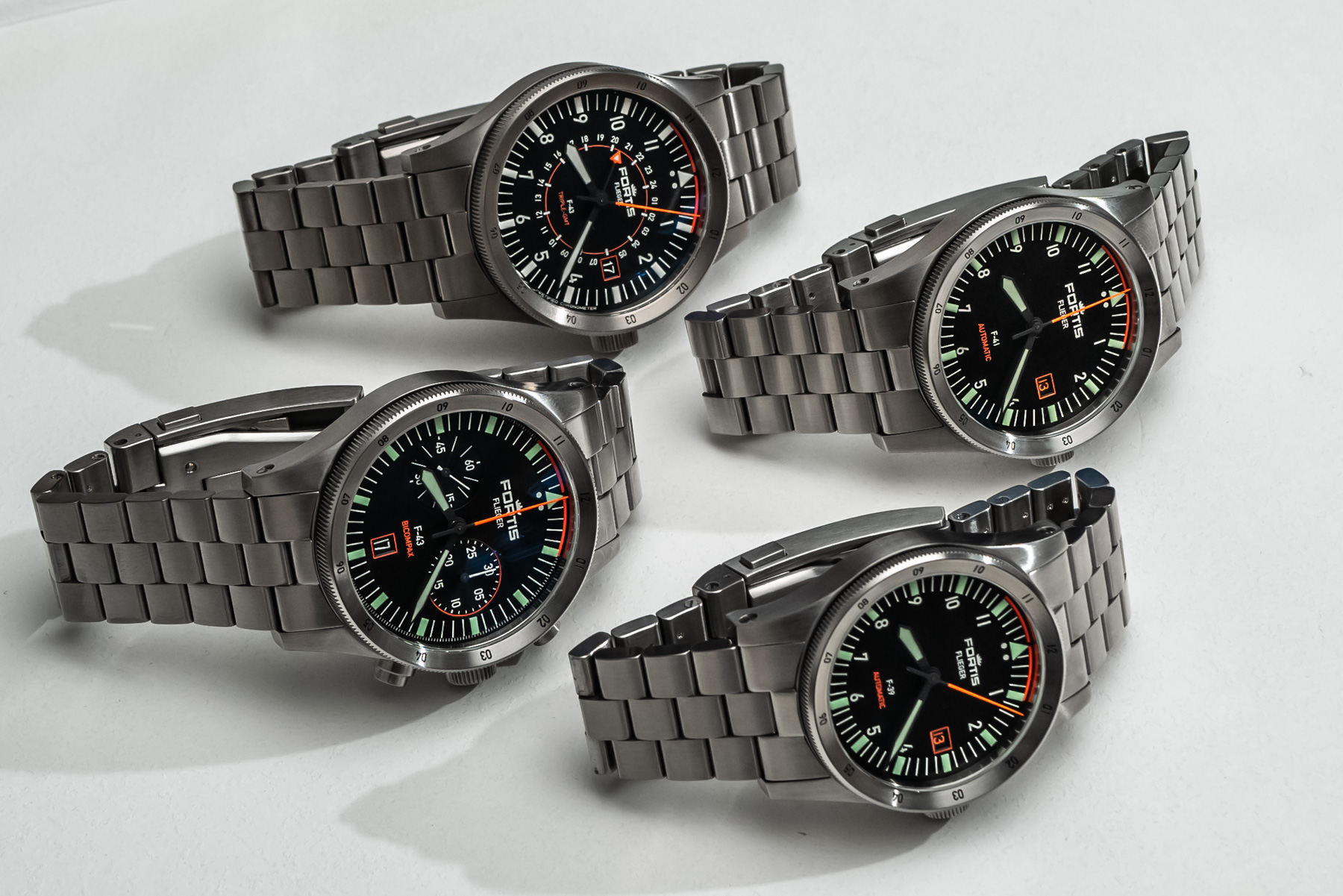
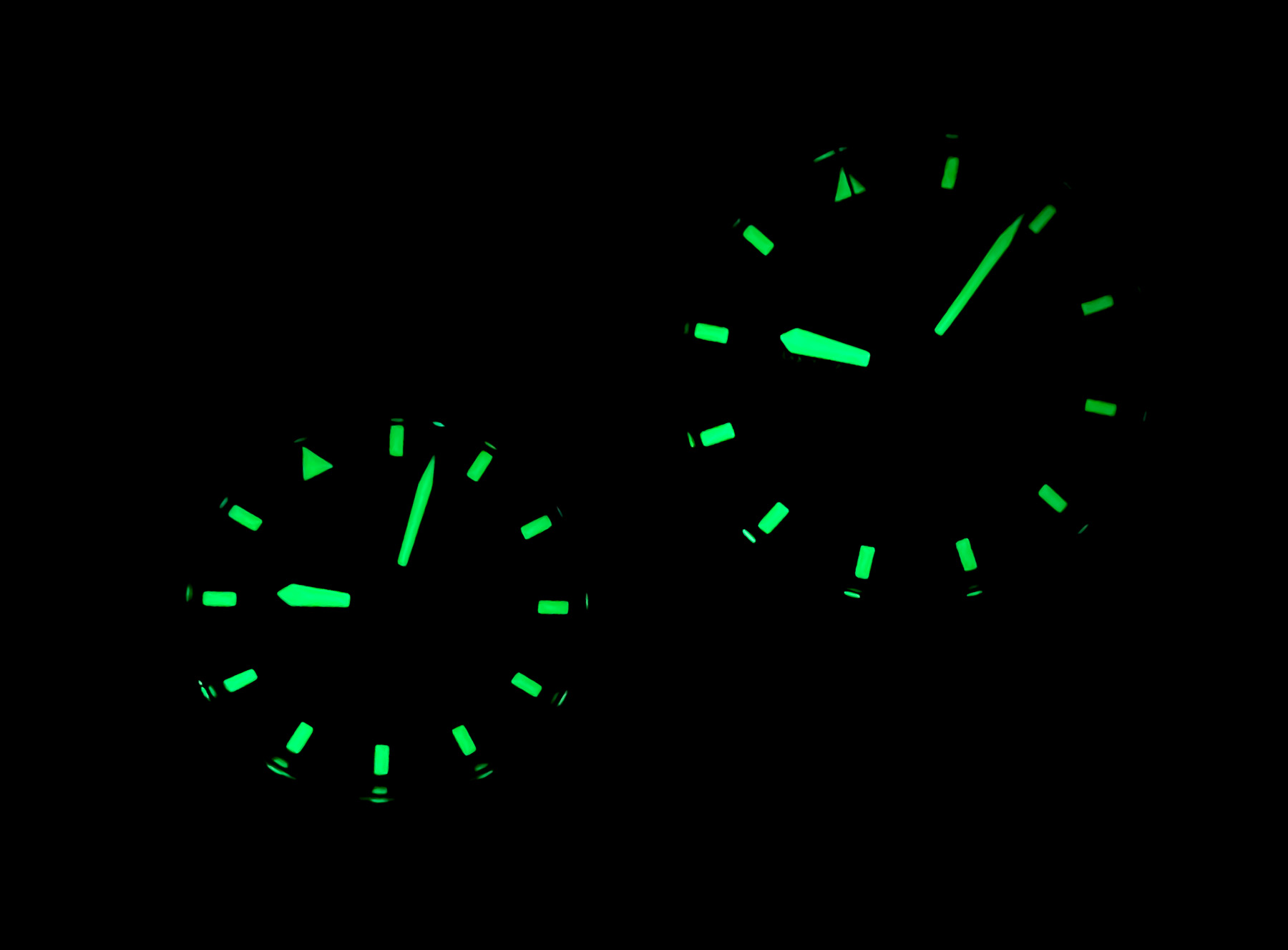
Whereas German brands like Sinn tend toward the austere and über-functional, Fortis takes a more modern and stylish approach in its interpretation of the classic flieger. In particular, the use of orange and mint green accents gives the watches a unique aesthetic that remains highly legible and functional while at the same time a bit more playful than its counterparts to the north. The Fortis Flieger line encompasses three distinct models: the F-43 Triple GMT, F-43 Bicompax, and the Automatic, which comes in two sizes, 39mm and 41mm. The three watches are instantly recognizable as siblings: Each sports a 12-hour bezel, Fortis’s super-legible Brixtrack markers, stainless steel construction, black dials, and pops of orange. Where they differ, clearly, is in their functionality. Without further ado, let’s get into each model.

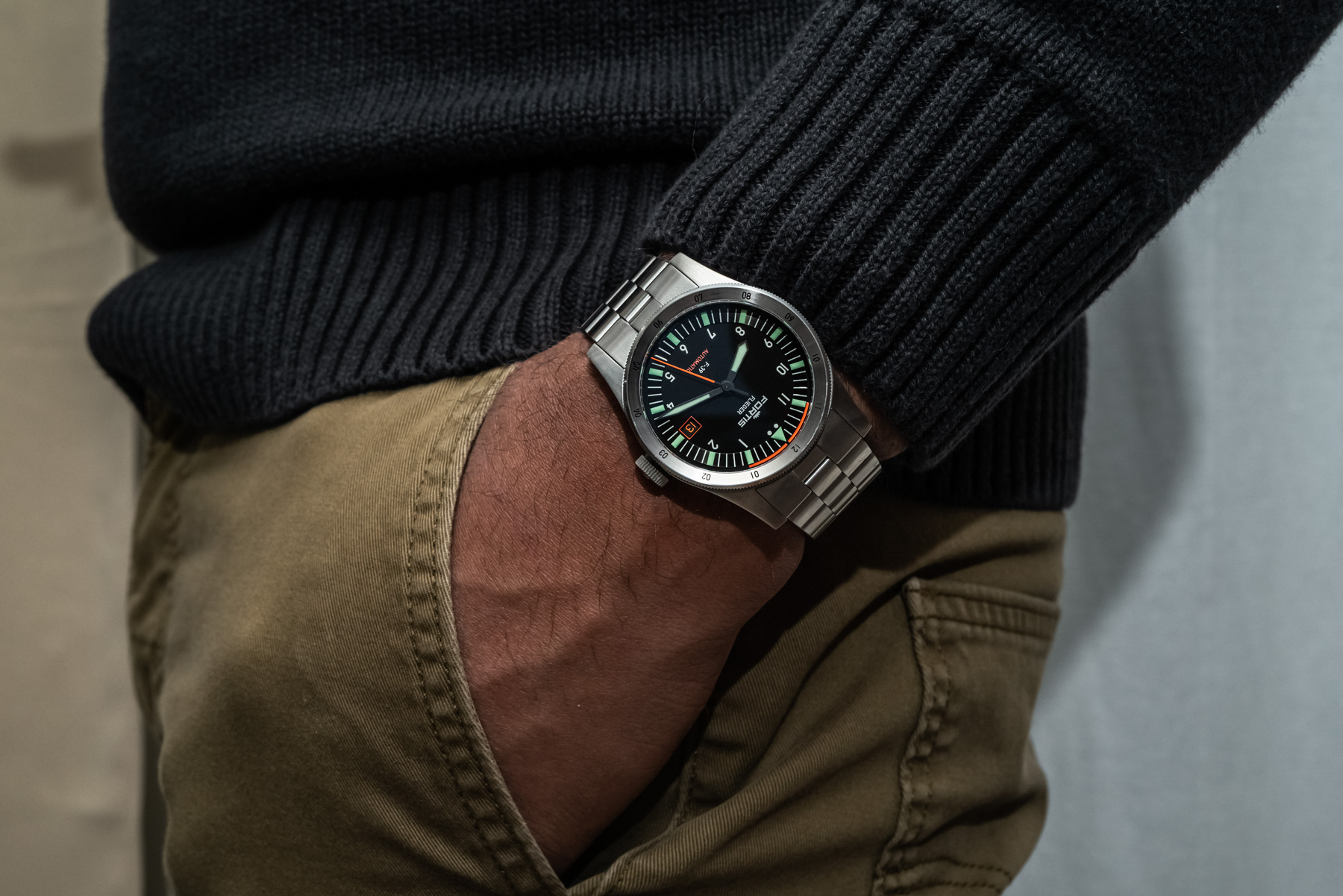
First on our list are the two automatics. One of the recent trends that we’ve seen from brands is offering their watches in different sizes in order to appeal to the broadest range of wrist sizes. Now, this doesn’t mean offering men’s and women’s versions — the industry seems to be moving away from that direction — but rather different sizes that will fit different wrists regardless of gender. While the size difference here is certainly not dramatic, only 2 mm, it does make a major difference in terms of both wrist presence and comfort depending on your wrist size.

Both watches offer 200m of water resistance sapphire crystal with anti-reflective coating and stainless steel by directional rotating puzzles with 24 clicks for tracking a second time zone. Powering the watches are Swiss-made UW-30 automatic movements (base Sellita SW 200-1), which feature date functionality, beat at 28.8 kbph, and have a 38-hour power reserve. Perhaps surprisingly, both watches have a 21mm lug width (a bit of a bummer for those with large collections of 20 and 22mm straps). Regardless of which size you choose, the price is 2,300 CHF on bracelet or 1,850 CHF on a leather strap. The 3-link block bracelet is masculine and robust and certainly fits the look of the watch. Topped off with a machined clasp with push button release and on-the-fly slide adjustment, I’d say that bracelet is the way to go.

Next in the lineup, we have the F-43 Bicompax, a two-register chronograph with date function that measures in at, you guessed it, 43mm in diameter. The chronograph shares many of the same design cues as the automatics, including the case profile, rotating bezel, and dial aesthetics. The wearing experience is similar to the 43mm automatic, however, the UW-51 Chronograph movement (a modified Sellita sw510) means that you’re dealing with a bit of extra height and heft. This is not a petite watch, nor is it meant to be. It is a highly functional tool watch that provides both chronograph functionality and a second time zone in a robust package.
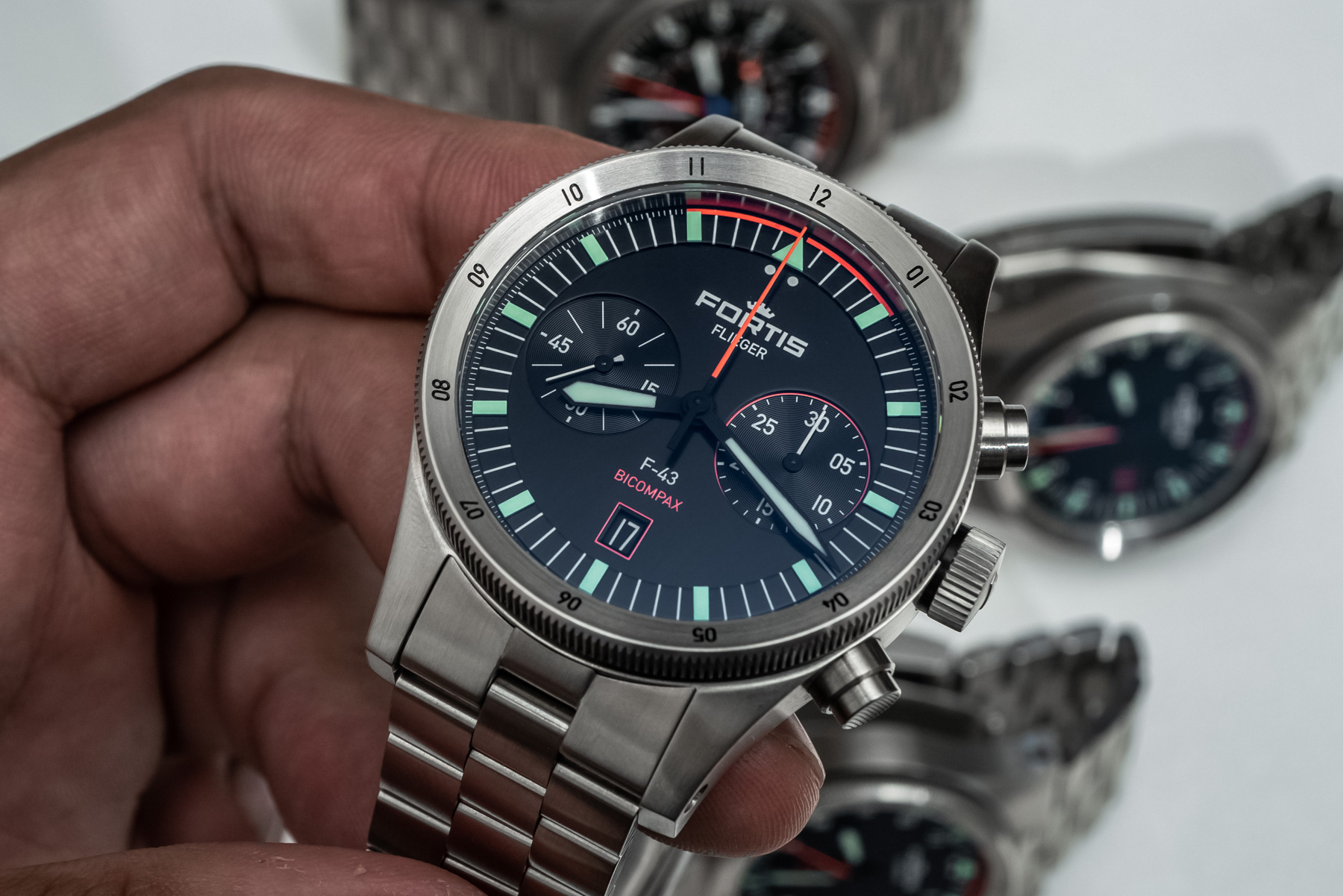
As with the other watches in the lineup, you still get 200m of water resistance despite not having screw-down pushers. The black, green, and orange color scheme is present once again in this model, but I think it works even better here with the extra ring of orange around the 30-minute register. That orange ring plays off the date window surround at 6 o’clock, giving the dial accents a unified appearance. The F-43 Bicompax comes in at 3,600 CHF on bracelet and 3,150 CHF on leather strap.

Rounding out the lineup is the F-43 Triple GMT, triple because you get the primary time with the hours, minutes, and seconds, a secondary time zone with a 24-hour GMT at the center of the dial, and a rotating 12-hour bezel providing the third time zone. Sure, three time zones are overkill for most people, but for frequent travelers or those dealing with friends and colleagues in multiple time zones, having access to multiple time zones can be quite useful.
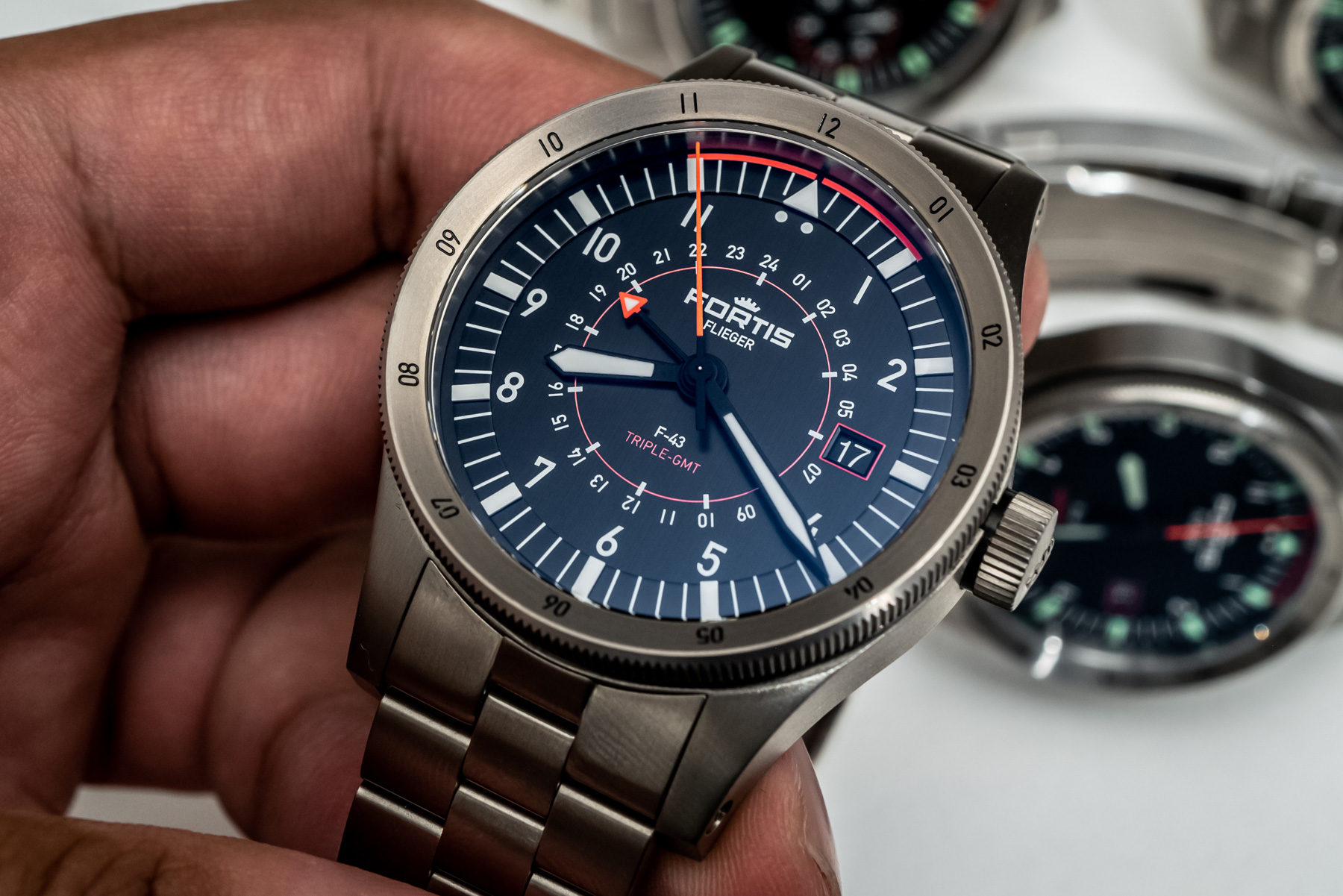
Though I quite enjoy the aesthetics of both the Automatic and Bicompax (especially the 39mm size on the F 39 automatic), it is the F-43 Triple GMT that is truly a standout in this collection. While the chronograph and automatics share a unified design aesthetic, the GMT changes a few extra ingredients in the recipe. First, Fortis opted for white hands and markers, eschewing the green tones found on the other models. Second, rather than a date window at 6 o’clock, Fortis moves the date window over to 3 o’clock here. Third, the dial on the GMT features a vertical texture rather than the flat matte black found on the other models. That said, it’s clearly a member of the same family that is likely to appeal to those who find the extra color of the green and orange just a bit much. Finally, the triple GMT is housed in the titanium case rather than stainless steel found with the other two models.
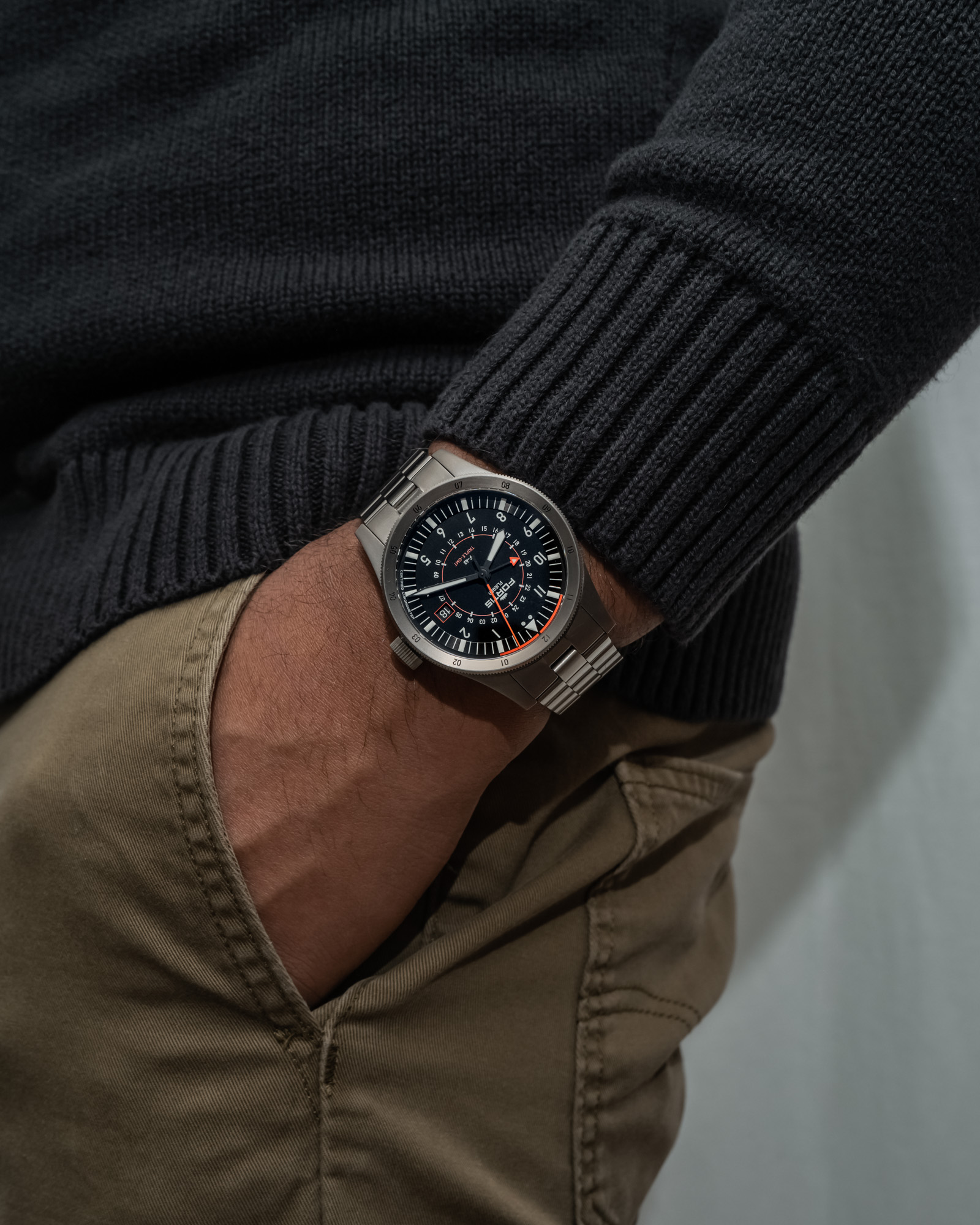
However, it might be the movement that truly makes the GMT the standout of the bunch. The WERK 13 automatic GMT movement is produced by Kenissi, the movement manufacture for Tudor’s in-house movements (along with Norqain and Chanel). The WERK 13 Movement provides 70 hours of power reserve, COSC certification, jumping hours, and a retrograde date setting. In other words, this is as modern a movement as you could hope for. Of course, that comes at a price, with the GMT clocking in at 4,300 CHF.
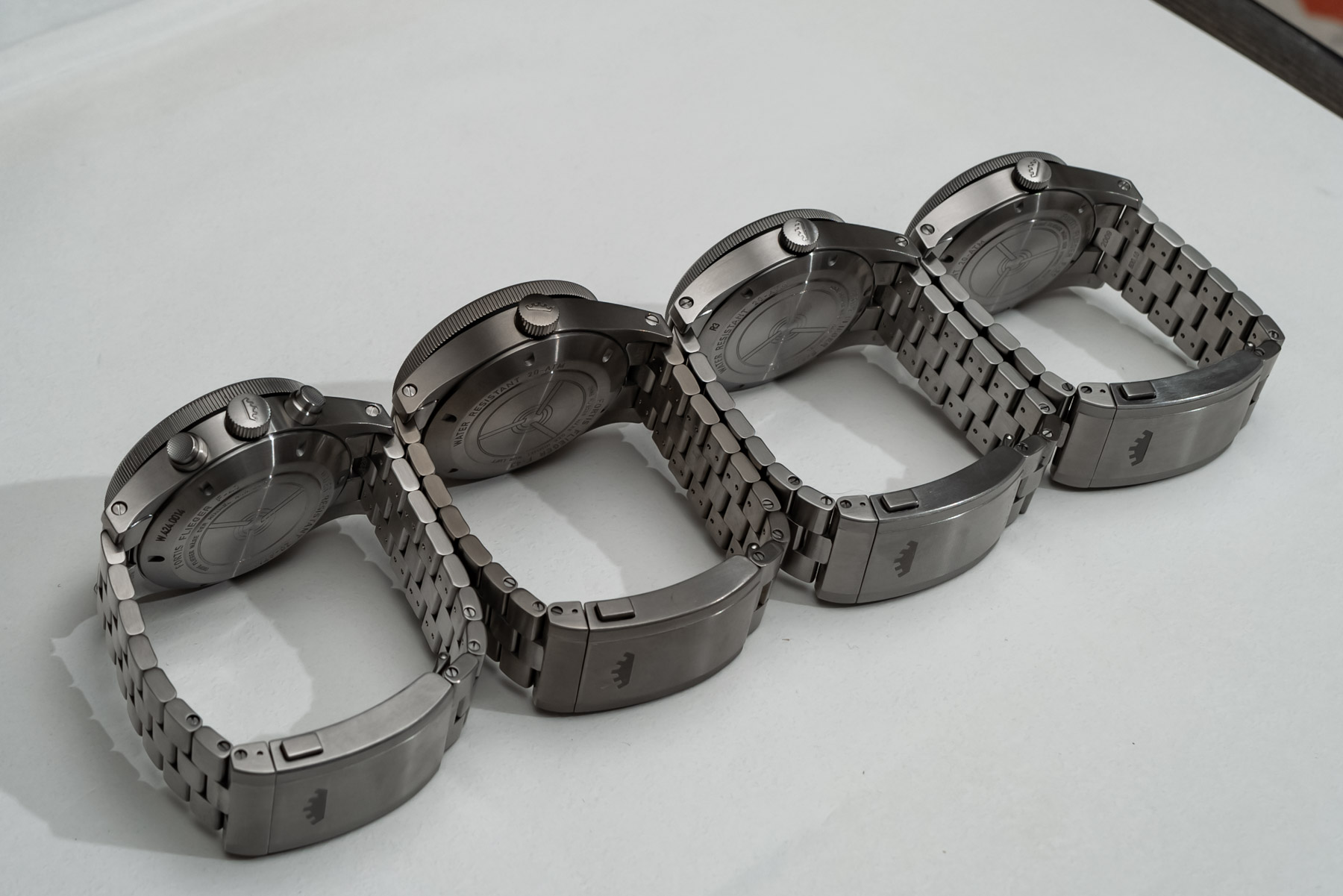
Iterating on a pilot’s watch is no easy task. On the one hand, you can simply replicate the look of a World War II Flieger, something that has been done ad nauseam, or you can try to modernize the design with your own distinct flair. However, in doing so, the trick is to retain those stylistic elements that have made pilot watches immensely popular in the first place. With their Flieger collection, Fortis manages to strike just the right balance. There are enough visual cues clearly define these as pilot’s watches inspired by decades of the brand’s work in this area, but at the same time, the green and orange accents, typography, and stylistic elements like the reversed triangle dots at 12 o’clock make this collection distinct from anything else on the market. If you’re looking for a modern interpretation of a pilot’s watch from a brand with a strong heritage in aviation, the Fortis Flieger collection is certainly worth a long look. More information on the Flieger line and Fortis’s other watches can be found on the brand’s website.

